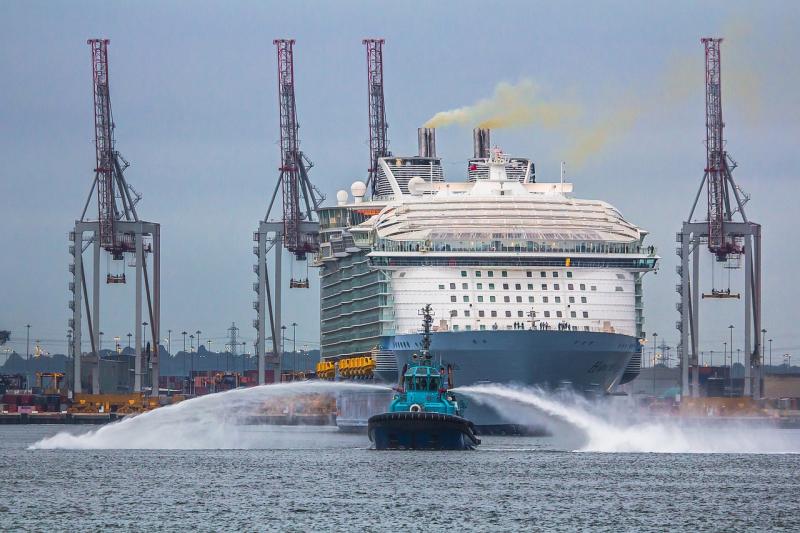Floating power barges represent a simple solution to rising ship emissions in UK ports

The Port of Southampton has seen a dramatic rise in emissions from cruise ships, according to recent study from environmental campaign group Transport & Environment. This takes no account of the other ship types that also call at Southampton, although there is a natural focus on cruise ships and their high-power demands. Plugging into shore power can stop ships venting these pollutants into the heart of Southampton, so why aren’t they doing this?
The problem, which has been widely recognised in Southampton for about five years, is getting sufficient shore power to the ports and then ships, compounded by an absolute shortage of power in the UK. This is a problem found all over the UK, including London, not just Southampton.
Currently there are two cruise ship berths with shore power in Southampton, but reports indicate that less than 10% of cruise ship calls in 2022 connected to shore power. With peaks of ten cruise ships on one weekend in Southampton, there simply is not sufficient power from the grid to supply shore power to them all, not to mention the other ships in port.
One of the biggest barriers in Southampton is the volume of stakeholders with different interests and split incentives. To get the power to the port would involve expensive infrastructure, which would require funding from utilities, the grid and the council.
That is unless the power comes directly from the port – but the port often doesn’t have the infrastructure to sell and transfer electricity to the ship operator. Plus, the revenue from the sale of the power would go to the port and/or any partnered energy supplier, not the council or the grid.
Adding to the complexity of the problem, none of these various stakeholders are willing to take the lead in solving this problem and no one is facilitating collaboration between the parties. Unfortunately, the solution is not as simple as running a cable to the ships. It requires lateral thinking.
At Houlder, based on our existing power barge projects such as the collaboration with Blue Sea Power in Greece, we have a potential solution in mind. A power barge, a small floating power generator, could provide power independent of major national grid and civil infrastructure challenges and could be realised much faster than the land-based equivalent infrastructure.
There are various options for generating the power, the most innovative of which being hydrogen fuel cells, once they have matured as a technology. Ultimately, though, whichever fuel the barge burns would be cleaner than the ship it’s providing shore power to.
A power barge has a much simpler stakeholder map. It could be owned by a bunker supplier, port, or ship owner – and the costs and profits would sit with them. It could be regulated and managed using the same rules that manage any other vessel transiting the harbour.
A power barge is also one asset that can simply be regulated, managed and upgraded, as opposed to the land-based equivalent infrastructure. The barge could also be controlled, and output adapted, according to demand.
The bottom line is that this solution would be practical to manage, cheaper and quicker to realise. It would also be scalable; there is really no reason it cannot work in any port in the world, subject to fuel supply. It would also be flexible; this could either be a temporary short term solution until there is an adequate supply of shore power at ports, or it can be iterated to permanently solve the problem in the long term – or a combination of both.
Note: Article by Chris Fisher, Senior Naval Architect, Houlder Ltd
